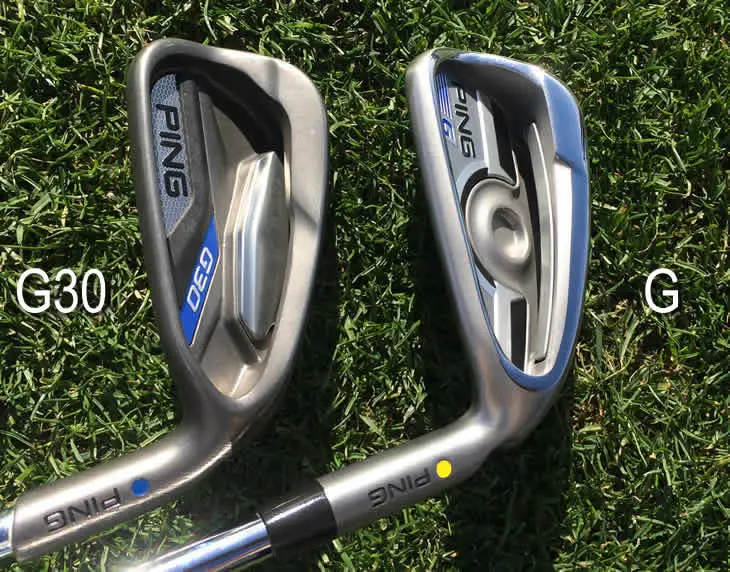Why Do Golfers Only Wear One Glove

In the picturesque world of golf, where precision and finesse intertwine, there is a common sight that piques curiosity and raises questions: golfers wearing only one glove. This distinct practice has become synonymous with the game, leaving many to wonder why golfers choose to don a single glove on one hand while leaving the other bare. The rationale behind this seemingly peculiar tradition is rooted in functionality, grip stability, and personal preference.
The use of a golf glove serves a vital purpose, providing golfers with enhanced grip and control during their swings. By wearing a glove on one hand, typically the non-dominant hand, golfers strike a balance between tactile sensitivity and grip support. This practice ensures that the golfer maintains a secure connection with the club, reduces the risk of slippage, and promotes consistency in swing technique.
Moreover, the decision to wear only one glove is influenced by a combination of tradition, personal choice, and the benefits it offers to golfers. Factors such as protection against blisters and calluses, adaptability to weather conditions, and the feel of direct contact with the club grip all come into play when golfers make their glove-wearing decisions.
In this article, we will delve into the reasons behind golfers wearing a single glove, exploring the functionality, advantages, and personal considerations that underlie this distinctive practice. So, let’s embark on a journey to uncover the secrets behind why golfers choose to embrace the singular glove, unraveling the threads that connect tradition, performance, and individual preference on the golf course.

The Function of a Golf Glove
At the heart of the matter lies the primary function of a golf glove. Its purpose is two-fold: to provide grip and enhance control during the golf swing, while also offering protection and comfort. When gripping the golf club, the glove acts as an intermediary between the player’s hand and the club’s grip, improving traction and reducing the chance of the club slipping.
Golfers rely on the tactile feedback received from the grip to execute their swings effectively. The material used in golf gloves is designed to strike a balance between grip and feel, allowing players to maintain a secure connection to the club while also experiencing the subtle nuances of the swing. The glove’s construction, typically featuring textured patterns or synthetic materials, ensures optimal grip performance.
In addition to grip enhancement, golf gloves serve as a protective barrier for the golfer’s hand. The repetitive motion of gripping and swinging a club for extended periods can lead to friction, resulting in blisters and calluses. Wearing a glove reduces the likelihood of these uncomfortable conditions, enabling golfers to focus on their game without distraction.
Hand Selection and Glove Wearing
Now that we understand the function of a golf glove, let’s address the question of which hand golfers typically wear the glove on. Conventionally, golfers wear the glove on their non-dominant hand, which is the left hand for right-handed players and the right hand for left-handed players. The rationale behind this choice is to provide the hand with the least dexterity and control additional support and stability during the swing.
The non-dominant hand, known as the “lead hand” or “top hand,” plays a crucial role in guiding the club throughout the swing. By wearing the glove on this hand, golfers can better maintain a secure and consistent grip, essential for generating power and accuracy. The bare hand, also referred to as the “trailing hand” or “bottom hand,” provides a counterbalance to the lead hand’s control.
While the tradition dictates wearing a single glove, some golfers may choose to wear gloves on both hands for various reasons, such as personal preference or addressing specific grip issues. However, the majority of golfers opt for a single glove on the non-dominant hand to strike the right balance between grip support and tactile sensitivity.
Grip Stability and Consistency
One of the primary benefits of wearing a golf glove is the contribution it makes to grip stability and consistency. The grip is a critical element of a golfer’s technique, directly influencing the clubface alignment, swing path, and ultimately, the direction and control of the ball.
By wearing a glove on the lead hand, golfers can maintain a more secure and firm grip throughout the swing. The material of the glove helps create friction between the hand and the club grip, reducing the chance of slippage. This stability allows golfers to swing with confidence, knowing that the club will remain firmly in their grasp.
Consistency in grip pressure is equally important. When the bare hand comes into direct contact with the grip, it may be prone to fluctuations in pressure due to factors such as sweat, humidity, or variations in grip technique. Wearing a glove helps mitigate these inconsistencies by providing a consistent layer of material that maintains a more stable grip pressure.
Consistency in grip stability and pressure is crucial for achieving a repeatable swing. When golfers can trust that their grip remains secure throughout the swing, they can focus their attention on other aspects of their technique, such as body rotation, weight transfer, and clubface control. This promotes a more fluid and efficient swing motion, leading to improved ball striking and greater shot accuracy.
Moreover, wearing a glove on the lead hand helps golfers maintain a consistent grip position. The textured surfaces or material patterns on the glove enhance the sense of connection between the hand and the grip, allowing golfers to better sense the position and orientation of their hands during the swing. This awareness facilitates better clubface control, ensuring that the face remains square to the target at impact.
Overall, the stability and consistency provided by a golf glove contribute to improved grip control, enhanced swing mechanics, and ultimately, more consistent and accurate shots.
Protection from Blisters and Calluses
The repetitive nature of gripping and swinging a golf club can take its toll on the skin of a golfer’s hand, potentially leading to blisters and calluses. These friction-induced conditions can be painful and affect the golfer’s ability to maintain a secure grip throughout a round of golf.
Wearing a golf glove provides a protective layer between the hand and the club grip, reducing the friction and minimizing the risk of developing blisters and calluses. The glove’s material acts as a barrier, preventing excessive rubbing and chafing of the skin.
The design and construction of golf gloves prioritize comfort and breathability to mitigate the buildup of moisture, which can exacerbate the risk of blisters. Many gloves feature perforations or moisture-wicking materials that allow for ventilation and moisture management, keeping the hand dry and comfortable during play.
By reducing the likelihood of blisters and calluses, golfers can maintain a more relaxed and confident grip on the club. This comfort enables them to focus on executing their swings without the distraction of discomfort or pain, resulting in a smoother and more controlled motion.
Enhanced Feel and Sensitivity
While grip stability is a primary consideration, golfers also value the tactile feedback and sensitivity they receive from the club grip. The touch and feel of the club provide valuable information about the swing, enabling golfers to make subtle adjustments to their technique.
Wearing a single glove on the lead hand allows golfers to strike a balance between grip stability and tactile sensitivity. The glove’s material provides sufficient grip traction while still allowing golfers to perceive the subtle vibrations and feedback transmitted through the club grip during the swing.
The choice to wear a glove on the non-dominant hand ensures that the golfer maintains direct contact and connection with the club grip through their bare hand. This direct contact enhances the golfer’s ability to sense the position of the clubhead, the clubface angle, and any minute shifts in grip pressure.
The enhanced feel and sensitivity afforded by wearing a single glove enable golfers to make precise adjustments during the swing. They can detect any potential swing flaws or inconsistencies and make corrective measures in real-time. This heightened awareness of club position and control contributes to improved shot-making and the ability to execute delicate shots with finesse.
Adaptation to Weather Conditions
Weather conditions can significantly impact a golfer’s performance and comfort on the course. From scorching heat to damp and rainy days, adapting to varying climates is essential for maintaining optimal playability.
The choice of wearing a single glove or using additional gloves may be influenced by the prevailing weather conditions. In hot and humid environments, golfers may opt for lightweight gloves or gloves made from breathable materials to combat excessive sweating and ensure a comfortable grip. These gloves allow for better airflow and moisture management, preventing the hands from becoming excessively sweaty and slippery.
On the other hand, in colder or wetter conditions, golfers may choose to wear additional gloves or thicker, more insulated gloves to keep their hands warm and maintain a secure grip. These gloves provide insulation against the cold and offer better protection against rain or dampness, ensuring that the grip remains stable even in adverse weather conditions.
Golf glove manufacturers have recognized the need for specialized gloves to address specific weather conditions. For instance, some gloves are designed with water-resistant or waterproof properties, providing extra protection against rain or dewy grass. Others feature thermal insulation to keep the hands warm during chilly rounds.
By adapting glove usage to weather conditions, golfers can maintain their grip stability and comfort regardless of the external environment. This adaptability allows them to focus on their game and perform at their best, regardless of the elements they may encounter on the course.
The Role of Personal Preference
In golf, personal preference plays a significant role in equipment choices, and glove usage is no exception. While convention suggests wearing a single glove on the lead hand, individual golfers may deviate from this norm based on their unique preferences, comfort levels, or specific needs.
Some golfers may choose to wear gloves on both hands, believing that it provides them with a consistent feel and grip across both hands. This approach may be favored by those who have experienced hand injuries or conditions that require additional support or cushioning.
Others may opt not to wear a glove at all, preferring the direct contact with the club grip and the feel it offers. This choice is more commonly seen among professionals or highly skilled players who have honed their technique and developed a heightened sense of touch and control.
Personal preference may also extend to the style, fit, and material of the glove. Golfers have a wide range of options to choose from, including leather gloves for a classic feel, synthetic gloves for durability and moisture control, and specialized performance gloves designed for specific grip styles or swing types. Factors such as glove thickness, closure type, and sizing contribute to the overall comfort and fit, allowing golfers to find a glove that suits their individual needs and preferences.
Ultimately, golfers should experiment with different glove options, styles, and configurations to discover what works best for them. By finding the glove that provides the ideal combination of grip, comfort, and feel, golfers can optimize their performance and enjoyment on the course.
Practical Considerations for Golf Glove Usage
To make the most of their golf glove experience, golfers should consider a few practical considerations. These tips can help ensure that the glove performs optimally and lasts longer:
- Proper glove selection: Choose a glove that fits snugly but not too tight. Avoid excessive wrinkling or looseness in the palm area, as it can affect grip stability and control.
- Glove care and maintenance: Extend the lifespan of your glove by keeping it clean and dry. Regularly wipe down the glove after use and allow it to air dry. Avoid exposing it to extreme heat or direct sunlight, as it can cause the material to degrade.
- Rotation and replacement: Rotate your gloves during practice sessions and rounds to allow them to dry fully and prevent excessive wear. Over time, gloves may wear out, lose their grip, or become less comfortable. Replace them as needed to maintain optimal performance.
- Multiple gloves for extended play: For long practice sessions or multi-round tournaments, consider having multiple gloves on hand. This allows you to rotate gloves and ensure a fresh, dry grip throughout your playing time.
By following these practical tips, golfers can maximize the longevity and effectiveness of their gloves, ensuring a consistent and reliable grip for improved performance on the golf course.
Conclusion
The tradition of golfers wearing a single glove on the non-dominant hand has a practical purpose and offers several advantages. From enhancing grip stability and consistency to providing protection against blisters and calluses, the golf glove plays a vital role in a golfer’s performance and comfort.
By wearing a glove, golfers can achieve a more secure and reliable grip, enabling them to execute their swings with confidence and precision. The glove’s material enhances sensitivity and feel while reducing the risk of developing hand injuries or discomfort from prolonged play.
While convention suggests wearing a single glove on the lead hand, personal preference and specific needs may influence golfers to wear gloves on both hands or forego wearing a glove altogether. The availability of various glove styles, materials, and technologies allows golfers to find the perfect fit that suits their individual preferences and requirements.
As golfers adapt to different weather conditions, they can choose gloves designed for specific climates or opt for lighter or more insulated gloves accordingly. This flexibility ensures that grip stability and comfort are maintained regardless of the external environment.
In conclusion, the decision to wear a golf glove and the choice of wearing a single glove on the non-dominant hand is rooted in functionality, comfort, and personal preference. Golfers can reap the benefits of improved grip, reduced risk of hand injuries, and enhanced performance by selecting the right glove and properly maintaining it. So, embrace the tradition, find the perfect glove for your game, and step onto the course with confidence in your grip.




